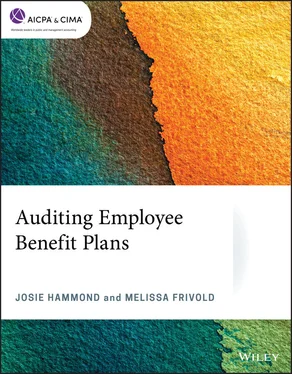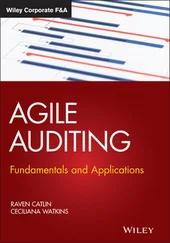1 ...7 8 9 11 12 13 ...21 Coverage . For a defined benefit pension plan to be qualified, it must cover at least 40 percent of the eligible workforce, or 50 people.
Participation . For any pension plan to be qualified, one of two standards must be satisfied:
1 The number of participating, eligible non-highly compensated employees must be at least 70 percent of the percentage of the participating highly compensated, eligible employees.
2 The average benefit provided to eligible non-highly compensated employees must be at least 70 percent of the average benefit of the eligible highly compensated employees.
As noted previously, eligible employees are those who have satisfied the plan’s age and service standards. This participant standard only applies to the employer contribution in a 403(b) plan. Employee salary deferral privileges in a 403(b) plan are subject to “universal availability,” which permits very few exclusions from eligibility.
Nondiscrimination in contributions, vesting, or other plan features . The plan features available to highly compensated employees must, generally, be available to other participants.
Average Deferral Percentage (ADP) and Average Contribution Percentage (ACP) . Special tests apply to plans that permit employee contributions. 401(k) plans are subject to both of these tests. 403(b) plans are only subject to the ACP test.
Eligible compensation . Because most benefits are based upon compensation, the definition of compensation used must also be nondiscriminatory. In addition, the amount of compensation that can be recognized for any participant is limited by law. For 2014 and 2015, no more than $260,000 and 265,000, respectively can be counted in determining benefits. A list of the benefit limits for various years can be found at www.irs.gov/Retirement-Plans/COLA-Increases-for-Dollar-Limitations-on-Benefits-and-Contributions.
Other rules . Top-heavy and safe harbor plans have minimum required contributions.
403(b) plans are subject to the preceding standards with respect to employer contributions, except the top-heavy rules do not apply. Employee salary deferrals or Roth contributions are subject to the annual dollar limits of a 401(k) plan, including the catch-up amounts, but are not subject to the ADP test. In addition, there is a special expanded contribution limit for long-service participants in a 403(b) plan. Most violations for a 403(b) plan only go to the tax status of the benefits for the affected participant. Violations of the written plan document requirement or universal availability can jeopardize the tax status of the entire plan.
Welfare plans, currently, have separate, less rigorous standards. Typically, the violation of the nondiscrimination rules for welfare plans does not affect the plan’s operation. They only affect the tax status of the benefit received by the participant and, potentially, a penalty to be imposed on the plan sponsor.
For more information on the compliance rules applicable to retirement plans, the auditor may wish to review the IRS webpage at www.irs.gov/Retirement-Plans/A-Guide-to-Common-Qualified-Plan-Requirements.
All qualified pension plans and 403(b) plans are subject to funding. This means that assets must be set aside to cover such benefits. Contributions to defined benefit pension plans are made throughout the year. Money purchase pension contributions are due no later than 8½ months following the end of the plan year. Discretionary plans, such as 401(k) plans or profit sharing plans, are not required to receive contributions every year, but the IRS rules require periodic and significant contributions to retain tax-qualified status.
Defined benefit retirement plans are to have obtained a certification of funded status not later than September 30th of each year. This is necessary because the PPA limited certain plan actions based upon the plan’s funded status. 11Some relief on the required funding of defined benefit plans was granted by the Worker, Retiree, and Employer Recovery Act of 2008 and the Preservation of Access to Care for Medicare Beneficiaries and Pension Relief Act of 2010 and in Moving Ahead for Progress in the 21st Century Act (MAP–21) in 2012. All of this activity means that it is important for auditors of defined benefit plans to stay up to date on developments, watch for plan amendments and pay close attention to the work done by the actuary.
Neither the tax nor the ERISA rules require that welfare plans be funded, but it is not uncommon to see plan document provisions requiring some level of funding.
Pension plans are subject to minimum vesting standards. Plans can vest benefits more rapidly than these standards, but not less rapidly. A “year of service” for vesting purposes will be defined in the plan document. It is important to recognize that this may vary from the measurement used to determine eligibility or benefit accrual.
The following are examples of the maximum vesting tables available to defined benefit plans (other than cash balance and other statutory hybrid plans):
 Example 1-1
Example 1-1
| Cliff Vesting: |
0% through year 4100% after 5 years of service |
| Graduated Vesting: |
0% through year 2 20% after 3 years of service |
|
40% after 4 years of service 60% after 5 years of service |
|
80% after 6 years of service |
|
100% after 7 or more years of service |
For defined contribution plans, the permissible vesting schedules are not later than the following:
 Example 1-2
Example 1-2
| Cliff Vesting: |
0% through year 2100% after 3 years of service |
| Graduated Vesting: |
0% through year 1 20% after 2 years of service 40% after 3 years of service 60% after 4 years of service 80% after 5 years of service100% after 6 or more years of service |
There is no required vesting concept for welfare plans.
The distribution rules for pension plans follow a slightly different classification than we have applied to this point. Rather than splitting up plans between defined benefit and defined contribution or pension plans and discretionary plans, the division is between plans subject to joint and survivor rules and other plans. In general, discretionary plans are not subject to joint and survivor. All defined benefit and money purchase plans are subject to the joint and survivor rules. Other plans are if the plan terms call for the normal benefit distribution form to be an annuity. Thus, for example, many 403(b) plans could be exempt from these rules but have chosen to provide annuity distributions and must, therefore, comply with the joint and survivor requirements.
Plans subject to the joint and survivor annuity rules require many notices. There are preretirement elections, spousal consents and post-separation distribution elections. The rules are required to be described in the plan document. Compliance with these notice requirements is a qualification standard.
Note: This is an area where violation could have a significant effect upon the plan’s financial statements. If a distribution is made to the participant without the spousal consent, it is possible that the spouse has a claim for half of the previously distributed benefit. If funds cannot be recovered from the participant, the plan sponsor might have to contribute additional funds to cover this additional distribution.
Читать дальше

 Example 1-1
Example 1-1









